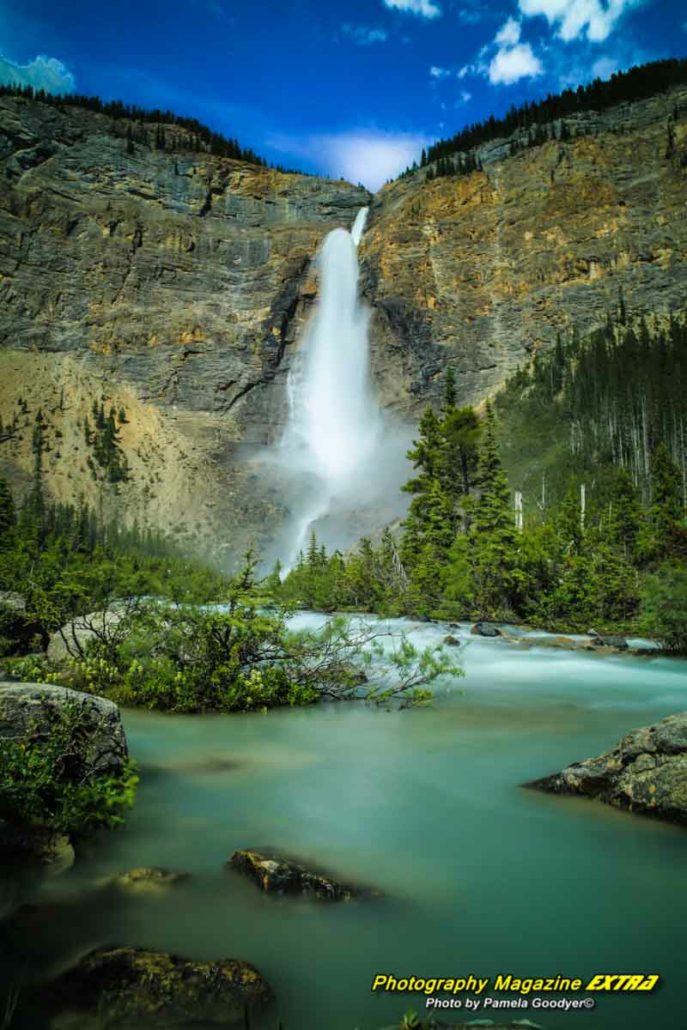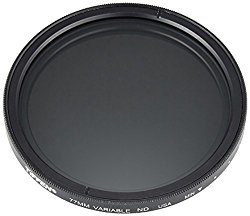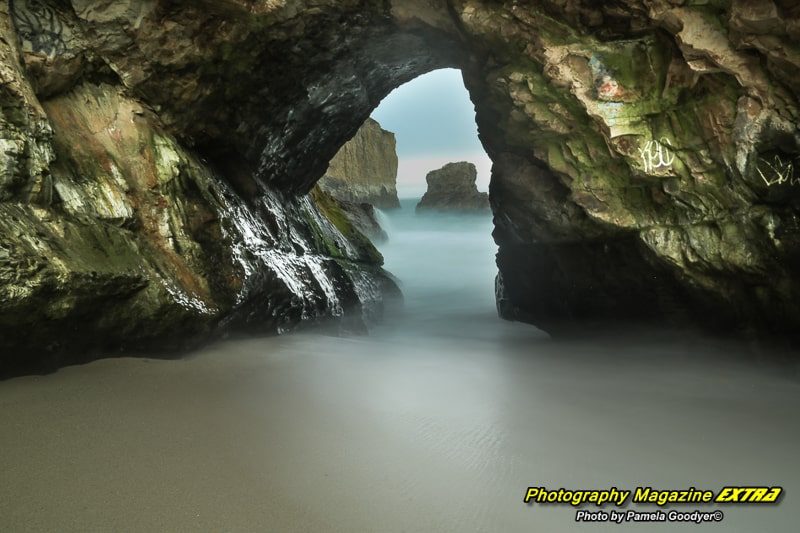At my own expense, I offer all of this to you: a humble tribute to Mother Gaia. I hope that you will spread my art and message to others, uplifting and inspiring their souls.
May my works guide photographers illuminating their path toward creating dynamic and impactful images that show the raw beauty and essence of life in all its transcendent glory. —Pamela Goodyer
Protect the authenticity of art by supporting us, ensuring AI doesn’t dominate the art world.
What is a Neutral Density Filter, and what do you use it for?
A neutral density filter, also known as an ND filter, is a tool used in photography to control the amount of light entering the lens. This allows photographers to adjust elements such as aperture, exposure time, and sensor sensitivity, helping them avoid overexposed images. By using this type of filter, photographers can achieve desired visual effects, such as a shallow depth of field or motion blur, even in challenging lighting conditions. For instance, they can use a slow shutter speed to create a blurred effect on moving subjects. Photographers often employ this technique for artistic purposes. Examples of these applications include:
- Blurring water motion, such as streams and waterfalls.
- Reducing the depth of field.
- Add motion blur.
- Extend the length of the exposure.
One can adjust the shutter speed while photographing a waterfall to create the desired milky water effect. A slower shutter speed of five seconds may be necessary to achieve the desired effect. However, on particularly sunny days, even at the smallest aperture setting, the five-second shutter speed may result in overexposure due to excess light entering the camera. To combat this issue, using a neutral density filter can effectively reduce the amount of light entering the camera and allow for longer shutter speeds without overexposing the photo.
These handy tools allow photographers to use their wide-aperture lenses in bright lighting without worrying about overexposure. This means they can still achieve shallow depth of field and selective focus effects even when the camera’s shutter speed isn’t fast enough. They block the light so your images are not overexposed.
Even with today’s advanced cameras and electronic shutters, ND filters still have a place in photography for those moments when the lighting is too intense. They provide a solution for creating stunning shots without sacrificing quality or creativity.
SHUTTER SPEED FOR BEGINNERS
For beginners in photography, one crucial aspect to grasp is shutter speed. This setting controls the time the shutter remains open and allows light to enter the camera’s sensor. A longer exposure of just two seconds can result in overwhelming light, thoroughly washing out your photograph with a blinding white glow.
By adjusting the speed of the shutter, we can control the amount of light that enters our camera. When we rapidly open and close the shutter, it captures a moment in perfect clarity. However, if we leave it open longer, moving objects will appear as blurred streaks against sharp, still backgrounds. This is particularly useful in waterfall photography, where photographing the rushing water in crisp detail while allowing the stationary rocks to remain clear creates a beautiful contrast. A tripod is essential for this technique, ensuring that only selected elements are captured with precision while everything else moves around them.
With the sun blazing overhead, taking a clear photo was nearly impossible. The light was searing and harsh, making it difficult to even expose for a tenth of a second. But with the help of a neutral density filter, we could extend the shutter speed, allowing for a long exposure shot. It was like putting sunglasses on your camera, shielding it from the intense brightness and allowing us to capture the moment with precision and clarity.
Renowned photographer Pamela Goodyer has a collection of Tiffen and Promaster filters. Many photos in Photography Magazine Extra were created with the Tiffen Mirror IRND 3.0 or 1.2 filter.
We also have Promaster filters.
TYPES OF FILTERS FOR PHOTOGRAPHY
Neutral density filters are a vital tool in every photographer’s kit. There are various types, each with unique features and advantages.
The graduated neutral density (GND) filter
The graduated neutral density (GND) filter is a popular choice among landscape photographers, as it helps to balance exposure in images with a bright sky and darker foreground. Unlike circular filters, rectangular GND filters allow for more precise positioning of the transition area from light to dark.
The center-neutral density (CND) filters
For those using extremely wide-angle lenses, center-neutral density (CND) filters can help balance exposure across the frame by darkening the center and lightening the edges.
The Polarizing Filter
Lastly, polarizing filters provide ND effects, reduce glare, and enhance colors in the sky and water, making them a valuable addition to any photographer’s collection. So, if you already own a polarizing filter, you essentially have an ND filter at your disposal, too!
Variable neutral density filter
The main disadvantage of neutral density filters is that you must carry various NDs to be entirely flexible in your shooting. This can become expensive. Manufacturers have created variable ND filters, which are all-in-one filters. These work by placing two polarizing filters together, one of which can rotate.
The advantages to this are that you get multiple ND filters in one package, saving money. Still, the disadvantage is a loss of image quality caused by using two elements together and combining two polarizing filters. It’s up to you to decide which route you want to go. There is a review of ND filters below, but we Like the Promaster Variable ND filter out of all the variable NDs.
Extreme ND filters
Some manufacturers have produced high-quality, extreme ND filters. Typically, these are rated at a 10-stop reduction, allowing prolonged shutter speeds even in relatively bright conditions.
Big 10 Stopper Extreme ND filter.
We used this filter on our last trip. It is the kind you put on the outside of your lens. We used it for one trip, but every time the rain started, our staff had to pack it up, walk to the shelter, pull it out again, and reset it. It can be too much to worry about. You can drop and damage it during this time, both in and out of the pouch. It is an expensive item to drop, hence the worry.
WE LOVE THE PROMASTER TEN STOP!
There is no sign of color distortion! Here are two shots with ND filters on long exposure shots.
LEARN WATERFALL PHOTOGRAPHY – QUICKLY AND EASILY
Follow this link to learn about long-exposure milky water photography, whether at the beach, lake, or waterfall. The technique is the same.
Besides Tiffen Filters here is another one of our Favorite Filter Brands.
The ProMaster Digital HGX Variable Neutral Density Filter
It is a variable neutral density filter providing the light reduction of about 1.3 to 8.6 stops. The ND3 to ND400 density creates a darkening of the entire image, allowing you to photograph with a wider aperture or slower shutter speed than typically required.
- Next Generation Digital Anti-Reflection Multi Coating – Specially formulated to minimize internal reflections created by CCD and CMOS sensors in a digital SLR.
- REPELLAMAX™ Element Resistant Coating – This EXCLUSIVE PROMASTER coating repels moisture, fingerprints, dust, dirt, and grime to ensure the sharpest images possible
- Hardened Optical Glass – Ultra hardened optical glass resists surface scratching and stands up to the most intensive use.
- Low Profile Anti-Reflective Frame – Ultra thin low profile frame helps prevent vignetting on super wide digital format lenses. The satin-like smooth finish helps to minimize reflected light.
- Black Rimmed Glass – The outer rim of the filter glass is treated with a special black ink








